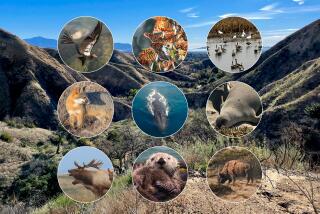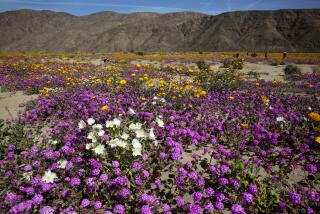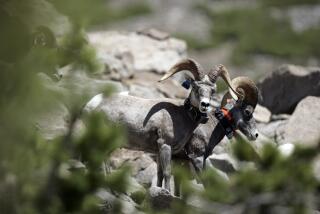5 places to see bison, America’s newly named national mammal
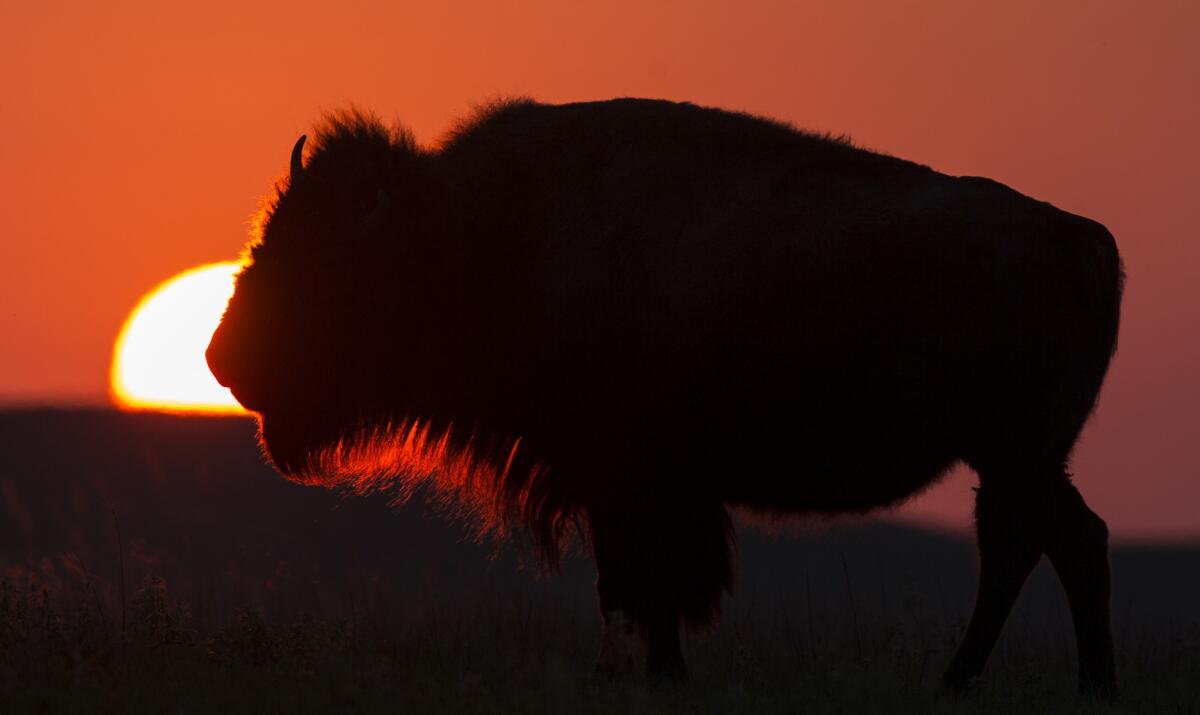
The shaggy bearded American bison finally got some respect Monday when President Obama decreed it to be the country’s national mammal.
In ancient times, millions of bison (whose species name is Bison bison bison) roamed from Alaska to Mexico, and from Nevada to the Appalachian Mountains. These days, there are far fewer wild bison, just about 30,000, after the creatures were hunted nearly to extinction in the 19th century.
Fortunately, bison are thriving in places as far away as Yellowstone National Park and as close as Santa Catalina Island, an hour’s boat ride from the southern tip of Los Angeles.
Here are five travel destinations to put on your summer travel list if you want to see the buffalo roam. Just make sure you keep your distance; they’re wild animals, not cuddly selfie posers.
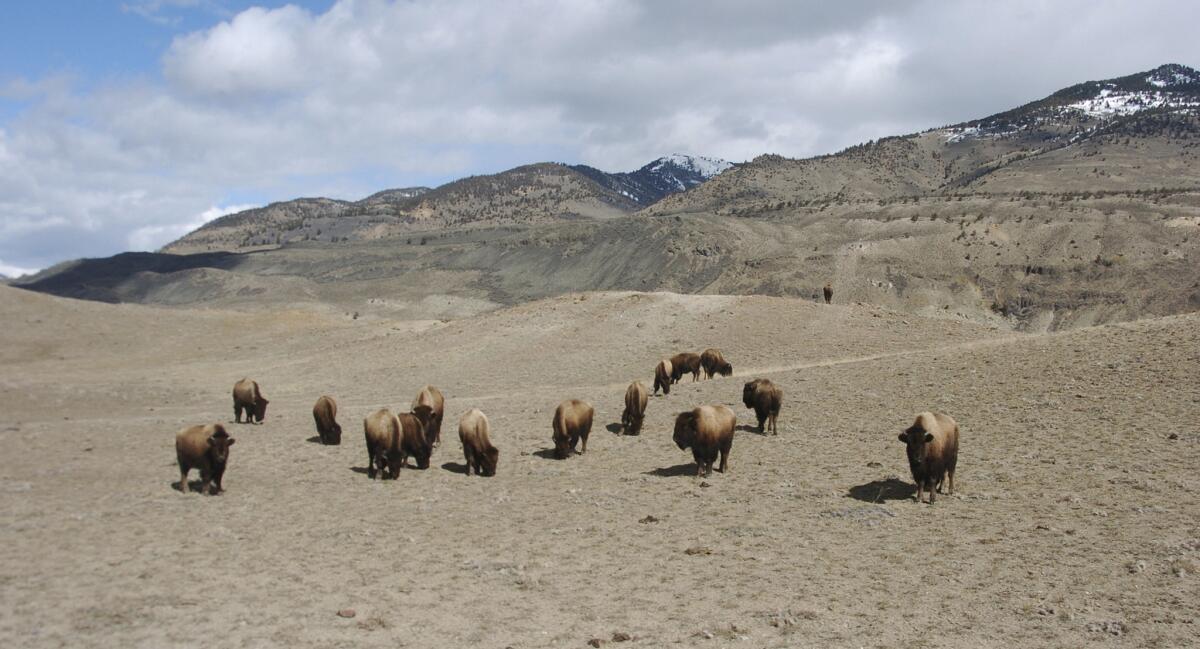
Yellowstone National Park in Montana and Wyoming boasts the only place in America where bison have thrived since prehistoric times, according to the U.S. Department of Interior. Today there are about 4,900, the largest herd on public lands.
Visitors can see them around the park year-round. For those who want a guide, you can sign up for a daylong wildlife watching tour this summer with the Yellowstone Assn. To reach the association, go online, email [email protected] or call (406) 848-2400.
Custer State Park in Custer, S.D., hosts a herd of about 1,300 bison. On Sept. 30, you can watch cowboys and cowgirls round them up -- and get up-close views -- for the annual culling of the herd. Some animals return to the park’s grasslands; others are auctioned off. The event is free and open to the public, and there’s an accompanying arts festival Sept. 29-Oct. 1. Info: Custer State Park, (605) 255-4515
Theodore Roosevelt National Park in the Badlands of western North Dakota hosts about 500 bison in two sections of the park (on a north and south unit). President Theodore Roosevelt, who went bison hunting and came back with a trophy that still hangs in his Sagamore Hill home, later helped head up the American Bison Society to keep the animals from going extinct. Info: Theodore Roosevelt National Park, (701) 623-4466
Wind Cave National Park in Hot Springs, S.D., isn’t a massive park, but it has something bison love: prairie grasses. Look for short clipped grass to find the animals in the park that’s better known for its underground maze of caves. Info: Wind Cave National Park, (605) 745-4600
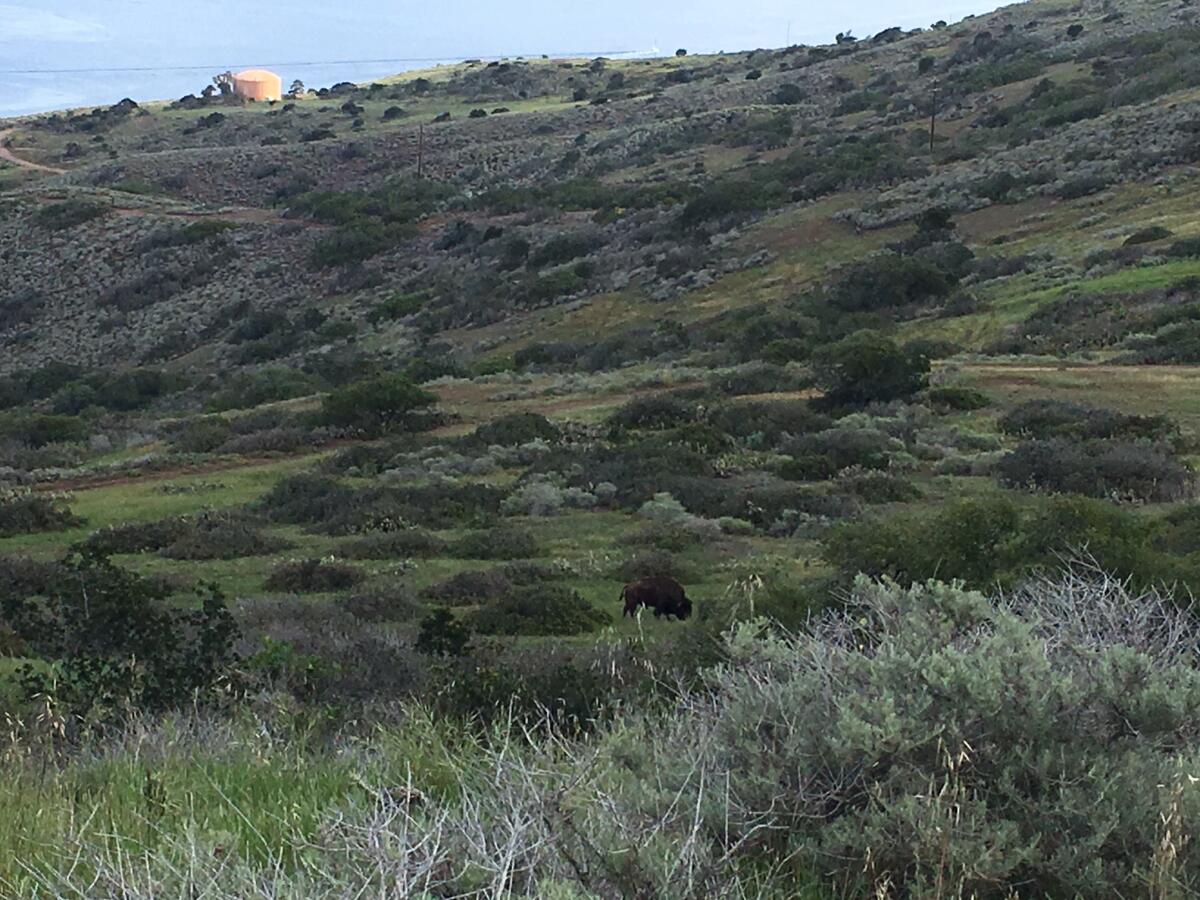
Bison aren’t native to Santa Catalina Island; Hollywood brought them. They were a prop leftover from a film shoot on the island in the early 20th century.
Today the Catalina Island Conservancy manages a couple hundred buffalo on the island that are considered a “domestic” herd, as opposed to those living in the wild.
Still, the creatures you can see if you venture out on hiking trails are indeed American bison. The best way to see them: The conservancy takes visitors out on Jeep Eco Tours to bison-worthy sites only the agency has access too; if you’re lucky, you might also see another American icon species -- bald eagles.
Conservancy spokesman Matt McClain says you could visit the island and notch other official California species too: garibaldi, the state fish; California quail, the state bird; and the California poppy, the state flower.
Info: Catalina Island Conservancy, (310) 510-2595, Ext. 108
MORE
There are up-close views of Mendocino County’s stunning coastline on these new trails
When you explore Jewel Cave and Wind Cave in South Dakota, revelations may be around the next corner
How many national parks have you visited?
More to Read
Sign up for The Wild
We’ll help you find the best places to hike, bike and run, as well as the perfect silent spots for meditation and yoga.
You may occasionally receive promotional content from the Los Angeles Times.
